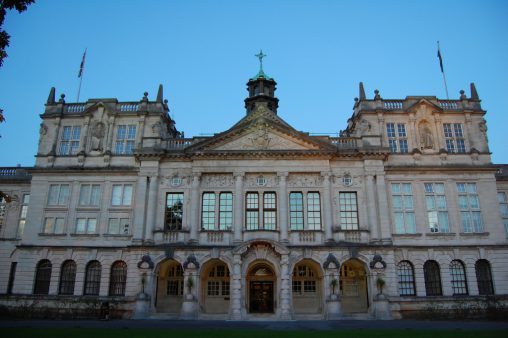Cardiff: a capital of creativity?
2 April 2015
The creative economy is a major employer across the UK, but its importance goes well beyond job creation. The creative and cultural life of a city enhances both reputation and quality of life – for those who live in it, those who visit and those who might be attracted to move to it.
As one the major employers in Cardiff – attracting over 28,000 students from all over the world – Cardiff University has an interest in the city’s creative and cultural life. But the university also has over 100 academics from a wide range of disciplines whose work engages with the city’s creative economy. We can, working with others, harness this engagement and energy to help enhance our city’s creativity.

Cardiff – and indeed Wales – has strong creative traditions and a significant cultural sector. It has leading venues, world famous companies, and a breadth of innovative and creative talent across a range of sectors. Yet it would be fair to say that Cardiff’s reputation as a creative centre is muted, while other cities in the UK – whether Brighton, Bristol or Edinburgh – have done more to nurture and develop creativity and innovation.
The desire to play a part in making Cardiff a more dynamic creative city was the main driver behind our decision to launch our Creative Cardiff project. The timing was fortuitous, fitting perfectly with one of the big new ideas at the heart of the University’s ambitions – the Innovation System. The idea is simple: to bring together academics, business, government, public sector and civil society in dynamic ways to create new ideas and practices. It is about engaging with the world and changing it.
Behind the Creative Cardiff project blows a fair wind. Both Cardiff Council and Welsh Government have recognised the importance of the creative economy – indeed, the University’s Professor of Digital Economy, Ian Hargreaves, has written key policy documents for both. The University is part of two flagship AHRC funded projects: REACT, bringing academics and practitioners together to create innovation, and Creative Citizens. As well as Cardiff, the University of South Wales and Cardiff Metropolitan both have strengths in creative practice, and the city’s reputation has been boosted by the success of its high profile TV drama and by cultural innovators like Artes Mundi and National Theatre Wales.
The addition of the ‘impact’ measure as a way to assess research performance (an idea now embedded in the both the Higher Education Funding Councils and the Research Councils) has changed the academic landscape in a way that gives the Creative Cardiff project added impetus. While impact is broadly defined – it can be artistic, cultural, economic or scientific – the emphasis is on impact beyond the academy. Cardiff University has quickly established itself as a leader in this kind of research – in REF 2014, the first research assessment exercise to include impact, the University finished second only to Imperial College London, and ahead of Oxbridge, on this measure.
All of which gives us reason to be bold and ambitious about Cardiff’s future as an innovative and vibrant creative city. There is, however, much to do. Unlike many other cities, the City Region has no established creative economy network. Our research – as well as discussion with other city networks – suggests that this is a crucial first step.
